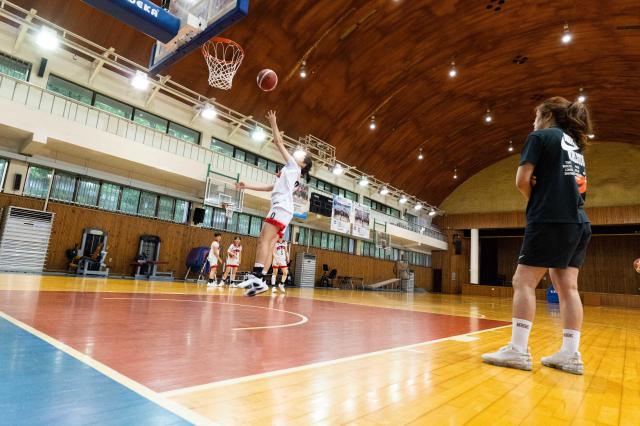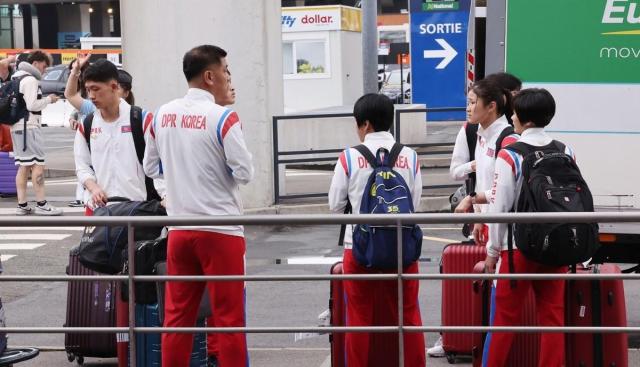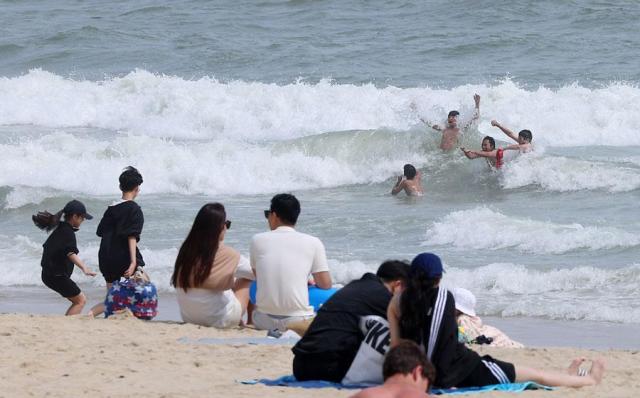
The nation's sports crisis is particularly evident in team sports. Of major ball sports like basketball, football, and volleyball – no Korean teams will be competing in this year's Olympics. The only team that has succeeded in qualifying is the women's handball team.
Korea's total fertility rate – the number of children born to a woman over her lifetime – stood at 0.72 as of last year, seriously affecting the pool of potential sports talent. The situation is more severe in disciplines where physical attributes like height play a crucial role, such as basketball.
In an interview with Aju Press early this month, Lee Eun-young, a 48-year-old coach at Suwon Jeil Middle School said, "When I attended this school and played basketball, there were about a dozen classes per grade. But now there are only one or two."
Only eight players currently play for the school's basketball team for a five-player game. The lack of enough players sometimes leads to defeats. "A coach should be able to replace players who get injured or ejected. But if there are no substitutes available, the match cannot continue and has to be forfeited," said another coach at the school.

Lee, who has been struggling to find new players, lamented, "Most Korean parents have only one or two children because they don't want their kids to play tough sports like basketball, which involves physical wrestling with others." He added, "I guess the situation for volleyball teams looks a bit better as tall teenagers often prefer to play volleyball rather than basketball these days."
That might be somewhat true for school sports teams in the Seoul metropolitan area, home to half the nation's population, but not for those in other parts of the country. "We get inquiries from students interested in volleyball from time to time. But the situation is starkly different outside of Seoul. Many schools in rural areas struggle to maintain teams due to a lack of players," said Ahn Jae-heon, a volleyball coach at Suil Girls' Middle School in Suwon.
This is exactly what is happening at Oga Elementary School in Yesan, South Chungcheong Province, where its 32-year-old volleyball team is on the brink of closure next year due to a lack of students.
"Most players will be graduating next year and there are no students who are younger than them," said Park Chan-joo, the vice principal of the elementary school with only 45 students in total. "There are only seven players on the team now" for a sport that requires at least six players.
When asked about the expected number of new players next year, her answer was "none." She added, "Among the current members, five will leave the team next year, which will inevitably lead to the team's dissolution."
Last year, another volleyball team in Asan in the same province closed for the same reason. "We had difficulty finding new players," said Lee Jung-woo, a coach in his early 40s at Dunpo Elementary School located near industrial complexes. "Nearly 80 percent of students at this school are non-Koreans, as many of their parents are foreigners, mostly Russian laborers who came to Korea to find jobs."
Lee Ho-chul, a staff at the Korea Middle & High School Volleyball Association (KMHV) said, "The increasing scarcity of volleyball teams in many schools in Korea is largely attributed to the country's super-low birth rate and shrinking population. This problem is more pronounced in elementary schools than in middle schools."

Korea experienced a roughly 35-percent decline in youth athletes nationwide between 2005 and 2024 from 121,800 to 79,619. Basketball and volleyball saw particularly steep drops in players, falling from 2,758 to 2,175 and 2,684 to 2,191, respectively. The decline was even more pronounced among younger athletes, with basketball players under 13 years old decreasing from 771 to 612 and volleyball players from 940 to 736.
These downward trends have affected Olympic participation. Korean male basketball players have failed to qualify for the Summer Olympics since their appearance in Atlanta in 1996, while the men's volleyball team last competed in Sydney in 2000.
Football, while remaining popular, perhaps mainly due to the success of several Korean stars playing in European leagues like Son Heung-min of Tottenham Hotspur, is not immune to challenges in finding young hopefuls and rookie players. Many Koreans enjoy the sport but apparently do not aspire to become footballers themselves. Reflecting this trend, the Korean men's under-23 football team failed to qualify for this year's Olympics, for the first time in 40 years, since the 1984 Los Angeles Games.
"Korea should formulate comprehensive strategies for physical education to cope with demographical shifts," a KSOC official told Aju Press last week. "Most of all, it is important to maintain consistent policies to effectively nurture sports talent, while ensuring competitiveness to regain its status as a sports powerhouse in key disciplines of excellence."
Korea has set a modest goal of winning at least five gold medals in archery, fencing, judo and swimming and finishing in the top 15 overall at this year's Olympics which kick off on Friday and run until Aug. 11. This year's global sporting extravaganza will bring together some 10,500 athletes from over 200 countries.
Copyright ⓒ Aju Press All rights reserved.




View more comments